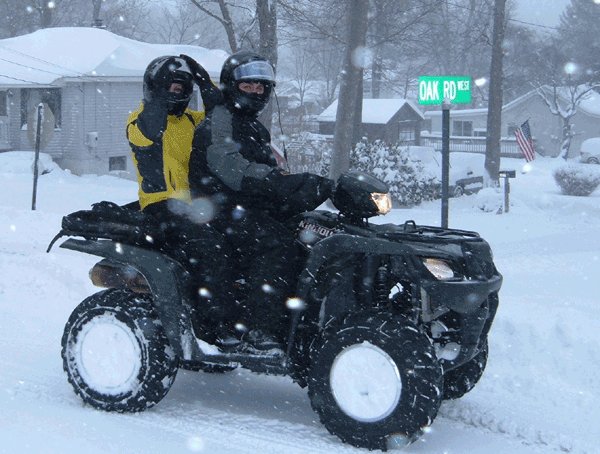Looking for a CDI box for 2000 Big Bear 400
-
Similar Forum Topics
-
By beast6228
I've been trying to piece this Lakota 300 back together, slowly. It's been a rabbit hole however. I replace one thing, then it leads to replacing other things. Anyway, When I got this thing I noticed that the hose coming off the camshaft cover wasn't attached to anything, it was just hanging loose. (It's literally just a foot long hose attached to nothing) I figured since it was venting the head it would be ok and I am sure it is.
However, last night I was looking at the service manual and noticed that it mentioned that this atv has a crankcase breather tube as well. Mine does not have one, so I looked at Partzilla and looked at the parts diagram and sure enough, it's definitely supposed to have one. The problem however is, the service manual does not show how it hooks up and the parts diagram only shows the exploded view of the assembly. I just find that kind of strange, nowhere in the manual does it show how it connects. Does it have it connector, attach to a nipple? It just doesn't say and it bothers me that there is a hole there without anything attached to it. If anyone has a Bayou 300 or Lakota 300 with an intact breather vent system and could possibly take some clear photos of it or know how it connects I would be very grateful. I have searched high and low and cannot find any information on it.
Thanks
-
By Ajmboy
View File 1986-2006 Kawasaki Bayou 300 service manual
This service manual is for a 1986-2006 Kawasaki Bayou 300.
Adding to downloads library.
Submitter Ajmboy Submitted 05/11/2018 Category Kawasaki ATV
-
By jwh
I am new to this site. Now down to business, I have been given a Kawasaki 220, tires are trashed and it has been setting for a long time. Do I need a battery in it to find neutral? I know there is a neutral switch and if I shift down(7 times????) then up one using the neutral switch I should be in Neutral. As you see I am in a learning curve here ......coments welcome.
-
By P_syko
Hello all! I’m new to the 4 wheeler world, but not new to the mechanic world. I was a diesel mechanic for many years and last year got into jet skis. I just bought a 1987 Yamaha moto 4 350 and now learning the ins and outs of 2 stroke engines. Looking forward to learning all the things.
-
-
By mmikesell
First post here need some help/advice. I bought a 2001 king quad 300, vin number JSAAK43A212111871. I have been trying to do some basic maintenance as it runs but doesn't idle all that well . I want to take out and clean/repair the carb but when looking for parts it ask for model X Y K1 K2. How do I know which model I have? I have tried some vin decoders but they haven't told me. If anyone could recommend a carb rebuild kit for my quad Id appreciate it. Also any tips on tracking down an owners manual?
-





Recommended Posts
Join the conversation
You can post now and register later. If you have an account, sign in now to post with your account.
Note: Your post will require moderator approval before it will be visible.